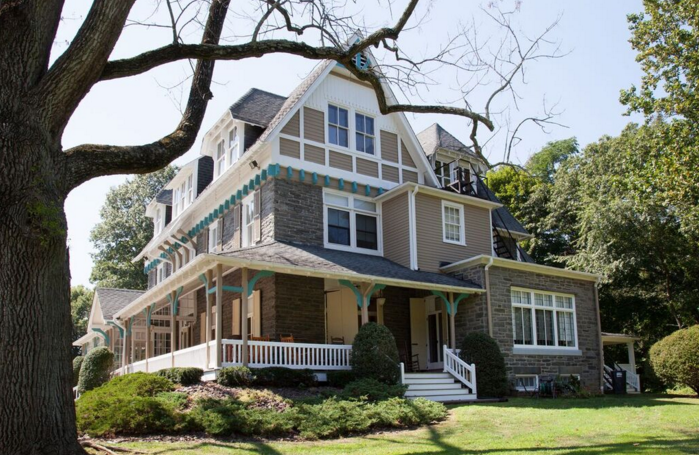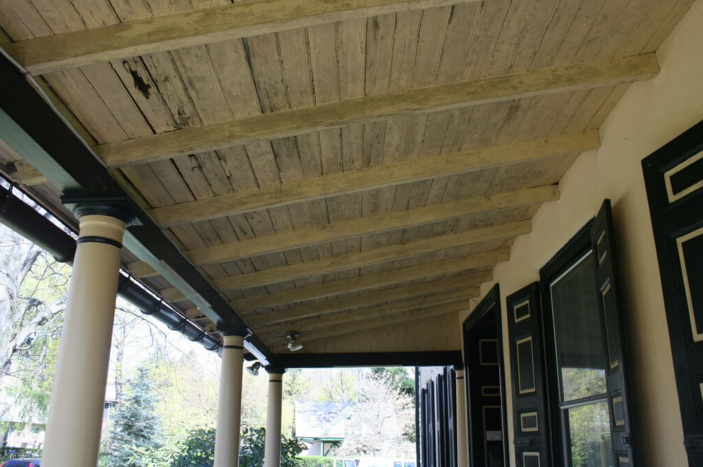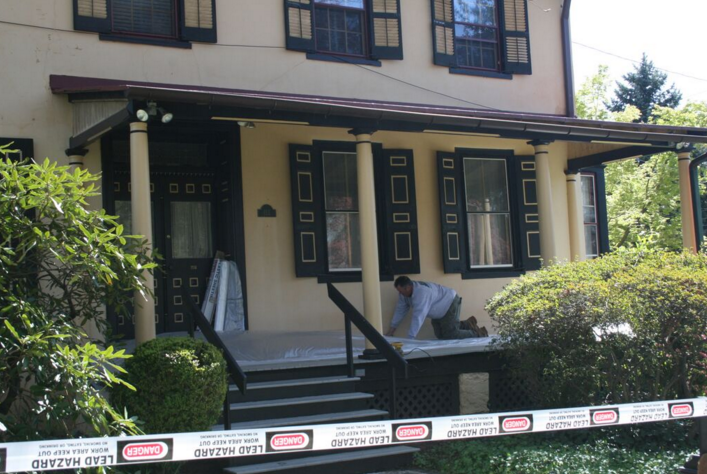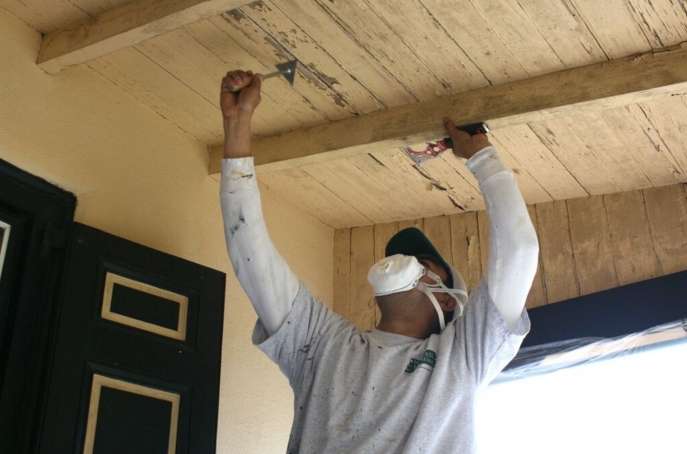Historic Restorations Return the Original Flair to the Main Line’s Heritage Homes

As the cradle of American history, The MainLine is blessed to have some of America’s most historic sites. From Valley Forge, to the historic district of Bryn Mawr, to our many beautiful college campuses and Frank Furness homes, this region is architecturally rich. One way we can treasure and preserve our country’s history is by keeping our historic registry sites in good repair. A historic home should always be handled delicately during renovation, and it’s vital to hire a professional who has experience working with historic registry sites.

Repairing Exterior Ornamentation and Woodwork
One common problem with historic homes is that the exterior has been severely weathered over the years and the original paint needs to be stripped and redone. On a historic home, this is more challenging because the wood can be dry and brittle – especially the gingerbread-style ornamentation that graces the rooflines of many older homes. These homes may be one hundred or even two hundred years old, so you need special equipment to be able to fully protect the architectural integrity of the ornamentation.
One way that Nolan handles delicate exterior ornamentation is by investing in special tools such as a festool: a sander attached to a hepa vacuum, allowing the technician to safely and gently sand trim and ornamentation. The surface is effectively prepared without damage, and the lead dust is contained. It’s expensive equipment, but it’s an investment that pays off; the final result looks great and gives you a clean, fresh surface to work from.
If the exterior wood is seriously weathered and beginning to rot, you’re going to need to restore or replace it. We have carpenters on staff to fix the elements that can be salvaged. Sometimes you’ll need to fill wood with restoration products like epoxies, which can save the effort and expense of replacement. If your home does require a replacement, we’ll match the new wood to the old wood for a seamless transition.

Paint Removal
Another common task you’ll face with older homes is removing older paint to prepare a new surface for refinishing. This can pose a challenge for some painting companies because for years paint was manufactured using lead. Once science progressed far enough for us to realize the harmful properties of lead-based paint, the industry changed – but when you’re working with a historic home it’s important to partner with a company who is certified to use lead-safe painting practices.
Practicing lead-safe paint removal not only protects the workers, it protects the local residents and visitors to the historic site. We’ll notify people in the area before beginning the renovation and make sure the work area is roped off with caution tape throughout. A team that practices good lead-safe techniques will be neat and clean, containing any dust that is disturbed by sanding. To contain the dust, Nolan uses special vacuums and fully seals off the area. At the end of the day, all dust is properly disposed of, leaving no trace of contaminants.

Color Matching Historic Hues
Once the worn-down paint has been removed, it’s time to select a paint that can recoat the walls and preserve the original look and feel of the surface. Like architecture, interior and exterior paint colors see trends that change over the years. You probably think of avocado green or mustard yellow for the 1970’s, or of deep colonial blues and emerald greens from the turn of the century. Part of that has to do with the advancement of technology in paint, allowing companies to expand the color options on the market, but, whatever the reason, color trends vary over time and these trends help us to associate different colors with different architectural eras.
Our color specialists will select the perfect hue to freshen up the walls while staying in-line with the historic trends of the era. They will also help to find the perfect degree of glossiness to maintain the original integrity of the decor. The moldings and ornamentation of your home can be accented with different sheens and finishes as well, so it’s important to have someone who understands the nuances of color in order to preserve the house’s original integrity. Nolan’s experienced team of color consultants work from an art and design background, and they have years of experience working with homes and businesses, so they’re well equipped to select the right historic hue for you.
An additional benefit of repainting your historic site is that paint technology is vastly superior these days than it used to be. Using top-of-the-line paints, we can give the site a new, high-quality finish that the historic paints were unable to offer. These new paints don’t fade or lose their sheen like old paints used to do, and they even offer benefits like mildew-resistance and washability that will help the new surface to withstand the test of time.
Refurbishing Historic Sites along the Main Line
Many historic sites are operating on a budget and need to maintain their open hours for visitors with minimal interruption for renovation. To minimize the interruption to your normal operations, the Nolan team can limit the duration of the renovation by bringing in a large enough team to get the job done quickly. And what’s more, the renovation will be of a quality that lasts, so your site can stay on budget and avoid spending big bucks on additional follow-up work.
If you need painting and restoration services for a historic building on the Main Line, trust the local professionals who have experience in this line of work. If you’d like to check out our portfolio of historic restorations, like our work on the Duportail House, the Main Line School Night, or the Radnor Society, contact us today for a few photographs and a consultation. We’ll restore your building to its full potential without taking away from the valuable history it holds for the community.
